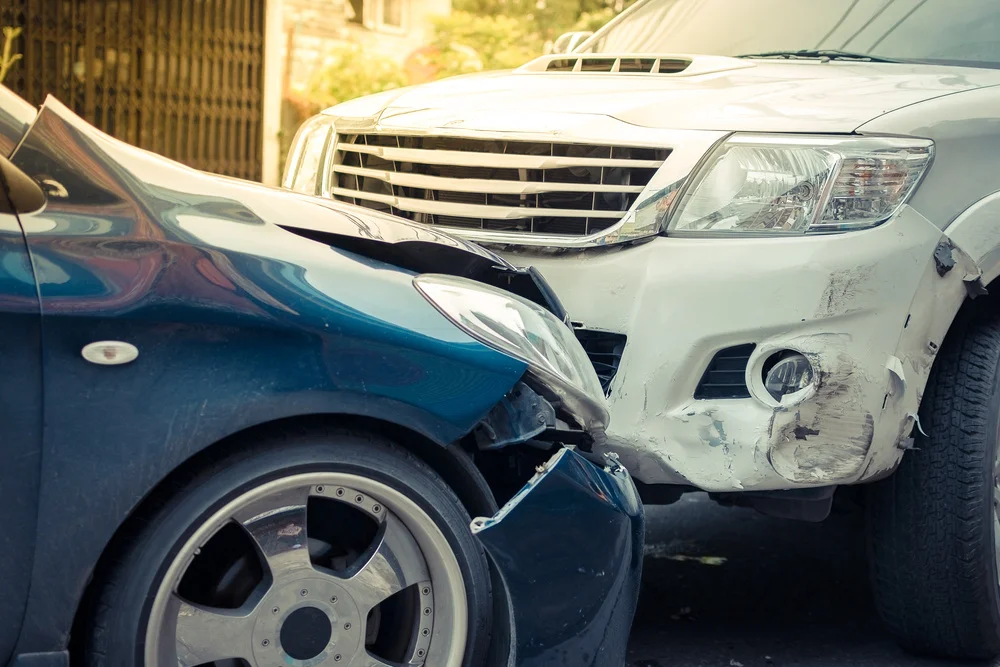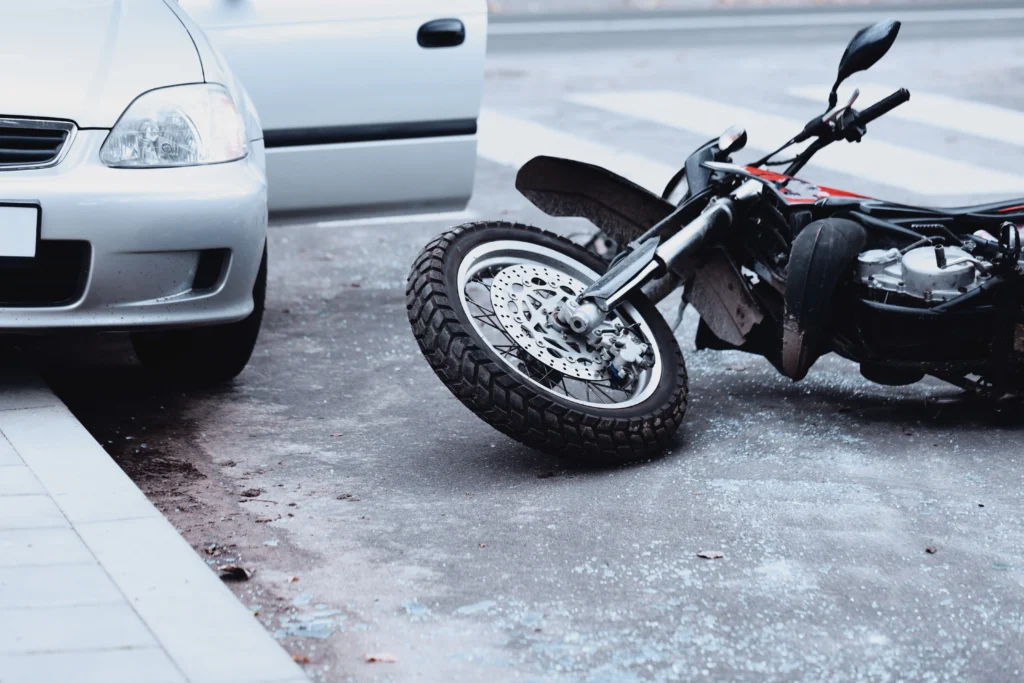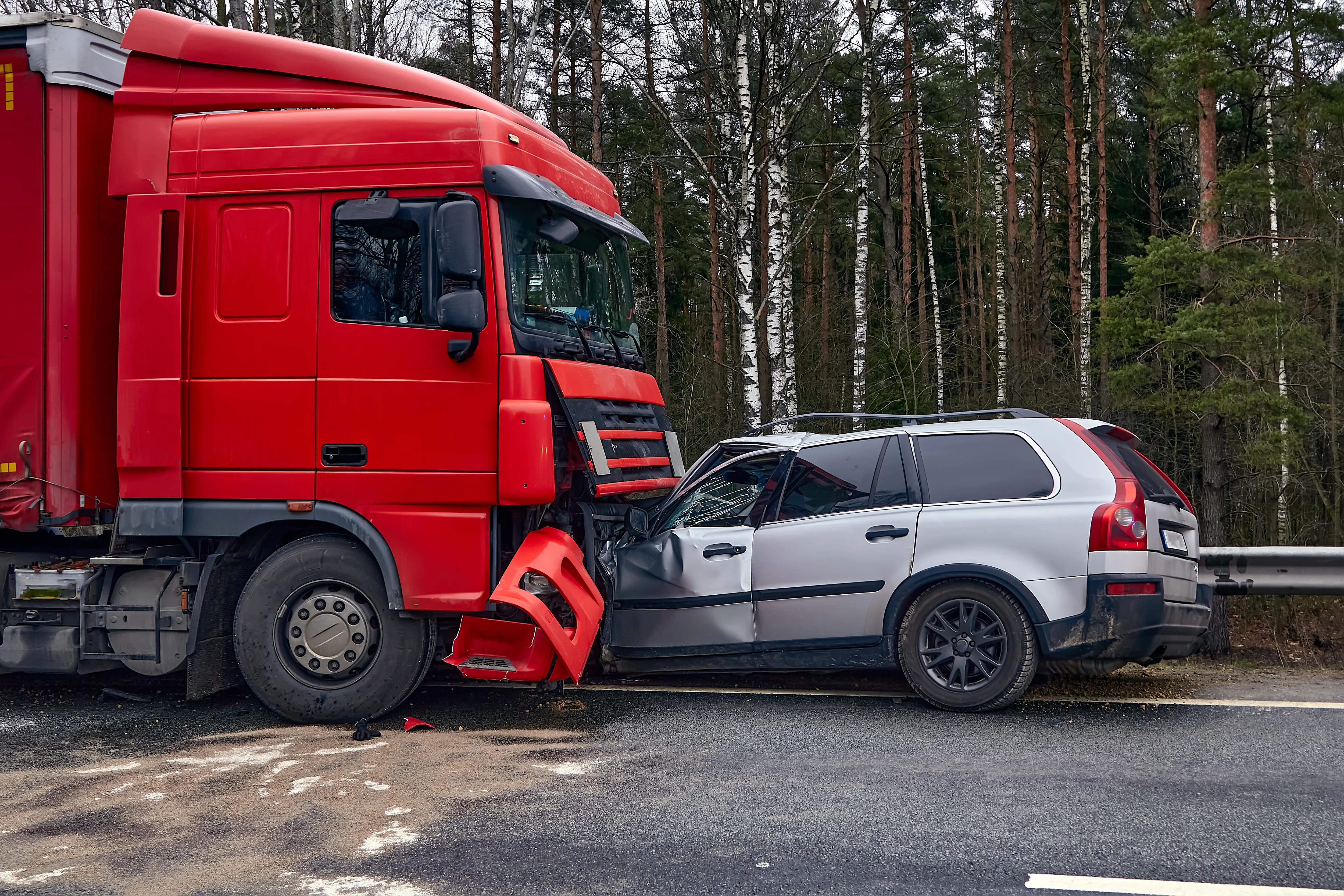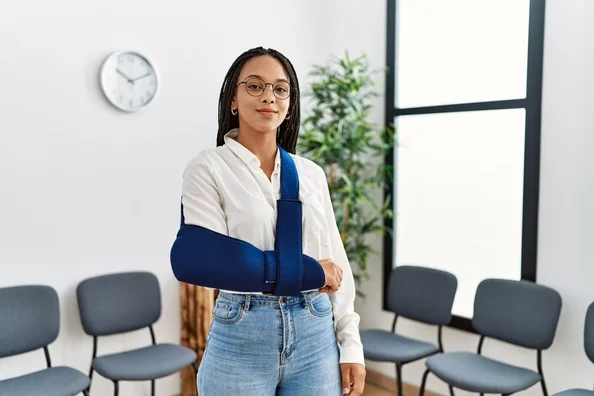Tacoma Motorcycle Injury Lawyers Who Fight for Riders on Washington’s Most Dangerous Roads
Motorcycle riders in Tacoma face some of the most dangerous traffic conditions in Washington. Whether traveling along I-5, maneuvering through downtown congestion, or riding through intersections on Pacific Avenue or South 38th Street, motorcyclists are at constant risk from inattentive drivers and unsafe road design. Without the protection of a car frame, even a low-speed collision can lead to catastrophic injuries or wrongful death.
If you or someone you love has been injured in a Tacoma motorcycle accident, you may be entitled to significant compensation under Washington law. At Bernard Law Group, our legal team fights for injured motorcyclists across Pierce County, holding negligent drivers accountable and securing the medical and financial support our clients deserve. Contact us today at (206) 752-2233 or visit our contact page to schedule a complimentary consultation. You pay nothing unless we win your case.
Common Causes of Motorcycle Accidents in Tacoma
Motorcycle accidents in Tacoma occur for many reasons, but nearly all of them stem from preventable negligence. From distracted drivers to poor road conditions, the risks faced by riders are far greater than those faced by occupants of larger vehicles. According to the National Highway Traffic Safety Administration, motorcyclists are over 25 times more likely to die in a crash than passengers in cars. These accidents frequently happen on busy routes like Interstate 5, South 19th Street, and State Route 7, where speeding, sudden lane changes, and heavy traffic increase the likelihood of a serious collision.
At Bernard Law Group, we investigate every contributing factor when representing injured motorcyclists in Tacoma. Our team works with crash reconstruction experts, medical professionals, and local safety analysts to uncover the full truth behind each wreck. By holding negligent drivers accountable and identifying dangerous road conditions, we build powerful cases designed to maximize compensation for our clients.
Distracted Driving Around Motorcyclists
Distracted driving remains one of the most significant threats to motorcycle safety in Tacoma. Whether a driver is texting, adjusting navigation settings, or eating behind the wheel, even a two-second lapse in attention can prove fatal for a nearby rider. Because motorcycles are smaller and less visible than cars, distracted drivers often fail to see them until it’s too late.
The Washington Traffic Safety Commission reports that distracted driving contributes to nearly one-third of all fatal crashes statewide. In dense areas like Pacific Avenue and Sixth Avenue, distracted motorists pose an especially dangerous risk to riders sharing the road. To learn more about distracted driving prevention, visit the Centers for Disease Control and Prevention’s distraction facts page and the National Highway Traffic Safety Administration’s distracted driving resource center.
Unsafe Left Turns and Driver Misjudgment
Many motorcycle accidents occur at intersections when a driver turns left across the path of an oncoming rider. This type of crash is especially common on multi-lane roads in Tacoma, such as South Tacoma Way and Portland Avenue, where drivers misjudge the speed or distance of an approaching motorcycle. Because motorcycles travel in narrower lanes and are often mistaken for being farther away, drivers who fail to yield during left turns frequently cause devastating crashes.
The Federal Highway Administration confirms that improper left turns account for a significant percentage of severe urban traffic injuries. Under Washington state law, drivers must yield to all oncoming traffic before making a left-hand turn, including motorcycles. RCW § 46.61.185 clearly states this obligation, and failure to comply often constitutes driver negligence.
Intersections With High Crash Volume
Specific Tacoma intersections see an outsized number of motorcycle crashes due to visibility issues, poor design, and high-speed turning lanes. Intersections at East 72nd Street and Pacific Avenue, or South 38th Street and Steele Street, are known to be particularly hazardous. These locations often lack dedicated left-turn signals, increasing the chances of miscalculation and sudden impact.
Public records from the Washington State Department of Transportation Crash Data Portal confirm that intersection-related collisions remain a serious concern for vulnerable road users, including motorcyclists.
Speeding and Aggressive Driving in Pierce County
Speeding remains a leading cause of fatal motorcycle accidents in Tacoma. Roads like State Route 16 and Marine View Drive are often used as commuter shortcuts, and many drivers exceed posted speed limits, particularly during off-peak hours. Speed not only reduces a driver’s ability to stop in time but also increases the force of impact when a collision occurs.
The National Safety Council explains that speeding significantly reduces a driver’s reaction time and increases the risk of losing control. In motorcycle crashes, speed multiplies the likelihood of ejection, severe trauma, or fatal outcomes. The Insurance Institute for Highway Safety provides further insight into the dangers of high-speed driving and its impact on accident severity.
Why Speed Enforcement Is Inconsistent
Despite posted speed limits and warning signage, enforcement in Tacoma remains inconsistent. While speed cameras are installed in some school zones, areas with heavy traffic and frequent motorcycle collisions often go unmonitored. A lack of patrol presence on roads like Canyon Road East and Bridgeport Way South means that aggressive drivers can operate with minimal deterrence.
Efforts from the Washington Traffic Safety Commission’s Target Zero Plan aim to eliminate traffic fatalities statewide, but until more speed control mechanisms are implemented in Tacoma, the risks to motorcyclists will remain high.
Dangerous Lane Changes Without Proper Checks
Another common cause of motorcycle crashes is when a vehicle changes lanes without signaling or checking blind spots. On congested Tacoma highways such as Interstate 705 or SR-512, drivers often make quick, unsignaled lane shifts to bypass slower traffic. In doing so, they frequently fail to spot motorcycles in adjacent lanes, leading to devastating sideswipe and merging collisions.
Washington’s Revised Code RCW § 46.61.305 requires drivers to signal at least 100 feet before changing lanes. Unfortunately, compliance is low, and motorcycles are often the first casualties of a careless merge.
Blind Spots and Motorcycle Visibility
Motorcycles can easily disappear in a car or truck’s blind spot, especially if the vehicle is lifted or has obstructed rear windows. Drivers who neglect to check side mirrors before merging can strike a motorcycle traveling lawfully in the next lane. According to the National Highway Traffic Safety Administration, mirror checks and blind spot awareness are essential components of motorcycle safety education and should be emphasized in all driver training programs.
Serious Injuries Caused by Motorcycle Accidents in Tacoma
Motorcycle crashes in Tacoma frequently result in devastating injuries. Unlike car occupants, riders have no metal frame, seatbelt, or airbags to protect them. When a motorcyclist is struck by a vehicle or ejected from their bike, the consequences are often catastrophic. Even at moderate speeds, the human body is no match for the impact forces and blunt trauma that accompany these violent collisions.
According to the Centers for Disease Control and Prevention, motorcycle riders are nearly five times more likely to be injured and 29 times more likely to die in a crash than those in passenger vehicles. Tacoma’s roads, especially high-speed corridors like I-5 and intersections along South Tacoma Way, are frequent sites of motorcycle crashes resulting in life-altering trauma. At Bernard Law Group, we fight to ensure injury victims receive compensation that reflects the full scope of their suffering.
Traumatic Brain Injuries and Concussions
One of the most common and devastating outcomes of a motorcycle crash is a traumatic brain injury (TBI). Even when a rider wears a helmet, the force of impact during a collision can cause the brain to slam against the inside of the skull. These injuries range from mild concussions to severe brain hemorrhages, often requiring long-term neurological care and rehabilitation.
The National Institute of Neurological Disorders and Stroke notes that TBIs can impair memory, speech, mood, and cognitive function. In some cases, victims never fully regain their ability to work or live independently. For Tacoma residents, this often means years of therapy at facilities such as MultiCare Tacoma General Hospital or Mary Bridge Children’s Hospital.
When Helmets Are Not Enough
While helmets significantly reduce the risk of fatal brain trauma, they cannot eliminate it. The Insurance Institute for Highway Safety reports that even DOT-approved helmets offer limited protection in high-speed collisions or cases involving angular force trauma. Riders who suffer brain injuries often experience post-concussion syndrome, chronic headaches, and sensory impairments.
Spinal Cord Injuries and Paralysis
Motorcycle crashes frequently result in spinal trauma. A sudden impact can fracture vertebrae, compress the spinal cord, or sever nerve tissue entirely. These injuries often lead to partial or full paralysis, with life-altering consequences that affect mobility, independence, and long-term health.
The Christopher & Dana Reeve Foundation provides extensive resources on spinal cord injury types, symptoms, and treatment options. Victims in Tacoma with cervical or thoracic spinal injuries may require extensive hospitalization, specialized equipment, and in-home care for the rest of their lives.
The High Cost of Care for Spinal Injuries
Spinal cord injuries are among the most expensive injuries to treat. The National Spinal Cord Injury Statistical Center estimates that lifetime care can exceed $3 million, depending on the patient’s age and level of impairment. Insurance often falls short, which is why legal representation is crucial for securing the resources needed for recovery and quality of life.
Multiple Fractures and Orthopedic Injuries
Broken bones are extremely common in Tacoma motorcycle accidents. Riders often extend their arms or legs to brace for impact, resulting in fractures to the wrists, elbows, knees, and ankles. More severe collisions can crush bones completely, requiring surgery, metal implants, and months of rehabilitation.
The American Academy of Orthopaedic Surgeons outlines the risks of compound fractures, joint dislocations, and bone infections that commonly follow motorcycle crashes. In some cases, these injuries lead to permanent loss of mobility or function, especially when joints like the hip or shoulder are involved.
Common Fracture Locations in Motorcycle Crashes
Motorcycle accident victims frequently suffer femur fractures, shattered pelvises, rib fractures, and collarbone breaks. These injuries not only cause immediate pain but also interfere with mobility and daily functioning. Multiple surgeries, including open reduction and internal fixation (ORIF), are often required, with extended recovery time that makes returning to work nearly impossible.
Internal Injuries and Organ Damage
Internal trauma is another common outcome of motorcycle accidents. The impact of a collision can rupture internal organs or cause internal bleeding that is not immediately visible at the crash scene. These injuries can be fatal without rapid intervention.
According to the National Library of Medicine, organs commonly damaged in motorcycle crashes include the spleen, liver, kidneys, and lungs. Victims may initially feel fine, only to later experience symptoms like dizziness, abdominal swelling, or loss of consciousness due to internal bleeding.
Diagnostic Delays Can Be Deadly
Tacoma emergency departments are well-equipped to treat visible trauma, but internal injuries are often misdiagnosed or delayed without proper imaging. CT scans and ultrasounds are essential, but if symptoms are overlooked or dismissed, patients may suffer permanent organ damage or death.
Severe Road Rash and Skin Trauma
Road rash occurs when a rider slides across the pavement after being thrown from a motorcycle. Though often dismissed as superficial, these abrasions can tear through multiple layers of skin and muscle, leading to infection, nerve damage, and long-term scarring.
The American Burn Association categorizes road rash as a type of friction burn. Severe cases may require skin grafts and months of wound care. For many motorcyclists, the physical pain is compounded by emotional distress and the cost of cosmetic surgery needed to repair the damage.
Emotional Consequences of Visible Scarring
Disfiguring injuries can have serious psychological consequences. Many survivors suffer from body image issues, depression, and post-traumatic stress disorder. The American Psychological Association confirms that trauma-related changes in appearance often lead to social withdrawal and diminished quality of life.
How Liability Is Determined After a Motorcycle Accident in Tacoma
Understanding how liability works in a Tacoma motorcycle accident is critical to protecting your legal rights. Washington is a fault-based state, which means the person or entity responsible for causing the crash is also financially liable for the injuries, property damage, and other losses that follow. But proving fault in a motorcycle case is rarely simple. Insurance companies often try to shift blame onto the rider, even when the evidence clearly shows the other driver was negligent.
At Bernard Law Group, we work tirelessly to uncover the truth behind each collision. By investigating police reports, surveillance footage, medical records, and crash scene evidence, we help Tacoma motorcycle accident victims fight back against unfair accusations and recover the full compensation they deserve.
The Legal Standard of Negligence in Washington State
Negligence is the core concept behind most motorcycle accident claims. In Washington, a driver is considered negligent when they fail to act with reasonable care and cause harm as a result. This might include texting while driving, failing to yield at an intersection, or speeding on a residential road. To win a motorcycle injury claim, your attorney must prove four elements:
- The at-fault party owed you a duty of care.
- They breached that duty through careless or unlawful behavior.
- Their actions directly caused your injuries.
- You suffered measurable damages.
This framework is confirmed by the Washington State Bar Association, which offers an overview of how civil liability is determined in personal injury cases.
Comparative Fault and Shared Liability in Washington
Washington follows a “pure comparative fault” rule under RCW § 4.22.005. This means that if both the rider and the other driver are partially at fault, damages are still recoverable, but reduced based on the rider’s share of responsibility. For example, if a motorcyclist is found 20 percent at fault and their total damages equal $100,000, they can still recover $80,000.
Comparative fault is frequently used by insurance companies to minimize payouts. If there’s even a hint of lane splitting, speeding, or an improper maneuver, insurers will try to use that against the rider. That’s why it’s essential to have legal representation familiar with the nuances of Washington’s comparative fault laws. The Washington Legislature provides the official statute governing this issue.
Common Tactics Used to Blame the Motorcyclist
Motorcyclists are often portrayed as reckless or unpredictable, regardless of the facts. Insurance adjusters and defense attorneys may argue that the rider was speeding, weaving through traffic, or riding unsafely, even when there’s no proof. These assumptions are dangerous and unfounded, but they can still impact your case if not properly challenged.
At Bernard Law Group, we counter these tactics by presenting objective evidence: traffic cam footage, eyewitness testimony, skid mark analysis, and expert crash reconstruction data. These tools help establish exactly what happened and who bears legal responsibility.
The Role of the Police Report in a Tacoma Motorcycle Crash Case
The police report is one of the most important documents in any personal injury case. After a crash, the responding officer will typically document the scene, collect witness statements, assign fault if appropriate, and note any traffic violations. In Tacoma, these reports are typically prepared by officers from the Tacoma Police Department or the Washington State Patrol.
While police reports are not admissible as final proof of liability, they often serve as a powerful negotiating tool when dealing with insurers. You can request a copy of a Tacoma collision report from the Washington State Patrol Collision Records Section or the City of Tacoma Police Records Department.
What If the Report Contains Errors?
It’s not uncommon for crash reports to contain mistakes or incomplete information. An officer might incorrectly assign fault, fail to note critical witness statements, or misidentify the sequence of events. If this happens, your attorney can request a supplemental report, obtain clarification from the officer, or bring in independent experts to refute the findings. Police reports are important, but they are not the final word on liability.
When Road Conditions or Government Negligence Are Involved
Not all motorcycle crashes are caused solely by drivers. In some cases, defective road design, poor maintenance, or obstructed signage can play a major role. If a pothole, missing guardrail, malfunctioning traffic signal, or debris caused your crash, the government agency responsible for road upkeep may share in the liability.
Filing a claim against a public entity such as the City of Tacoma, Pierce County, or the Washington State Department of Transportation requires strict procedures. You must file a formal notice of claim at least 60 days before filing a lawsuit, per RCW § 4.96.020. For guidance, the Washington State Office of Risk Management outlines how and where to submit claims for injuries on public property.
How to Prove Government Liability
To hold a government agency accountable, your attorney must show that the agency knew or should have known about the hazardous condition and failed to address it within a reasonable time. Maintenance logs, past complaints, and expert safety assessments are often key pieces of evidence in these cases. Our firm regularly works with engineers, traffic safety consultants, and city planners to build strong cases against negligent municipal agencies.
Talk to a Tacoma Motorcycle Accident Lawyer Today
If you or someone you love was hurt in a motorcycle accident in Tacoma, don’t let insurance companies pressure you into settling for less than you deserve. Motorcycle crashes cause more than just physical pain. They disrupt careers, destroy vehicles, and leave families scrambling to pay medical bills and cover lost income. You need someone in your corner who understands the law, knows how to prove fault, and has the experience to win.
At Bernard Law Group, we have spent decades fighting for Washington motorcycle accident victims. Our Tacoma motorcycle attorneys understand the stakes. We know how to take on aggressive insurance adjusters, negligent drivers, and even government agencies when dangerous roads are to blame. Most importantly, we never charge legal fees unless we win your case.
Call us today at (206) 752-2233 or contact us through our Tacoma injury law firm’s website to schedule your free consultation. Let us fight for the justice and compensation you’re owed. The sooner you act, the stronger your case will be.
Practice Areas
Trust Us With Your Personal Injury Claim
If you or a loved one have been injured, Bernard Law Group will fight for you every step of the way. We will give our all to secure the compensation you rightfully deserve.
Contact usfor a free consultation.
Phone: (206) 312-3908









